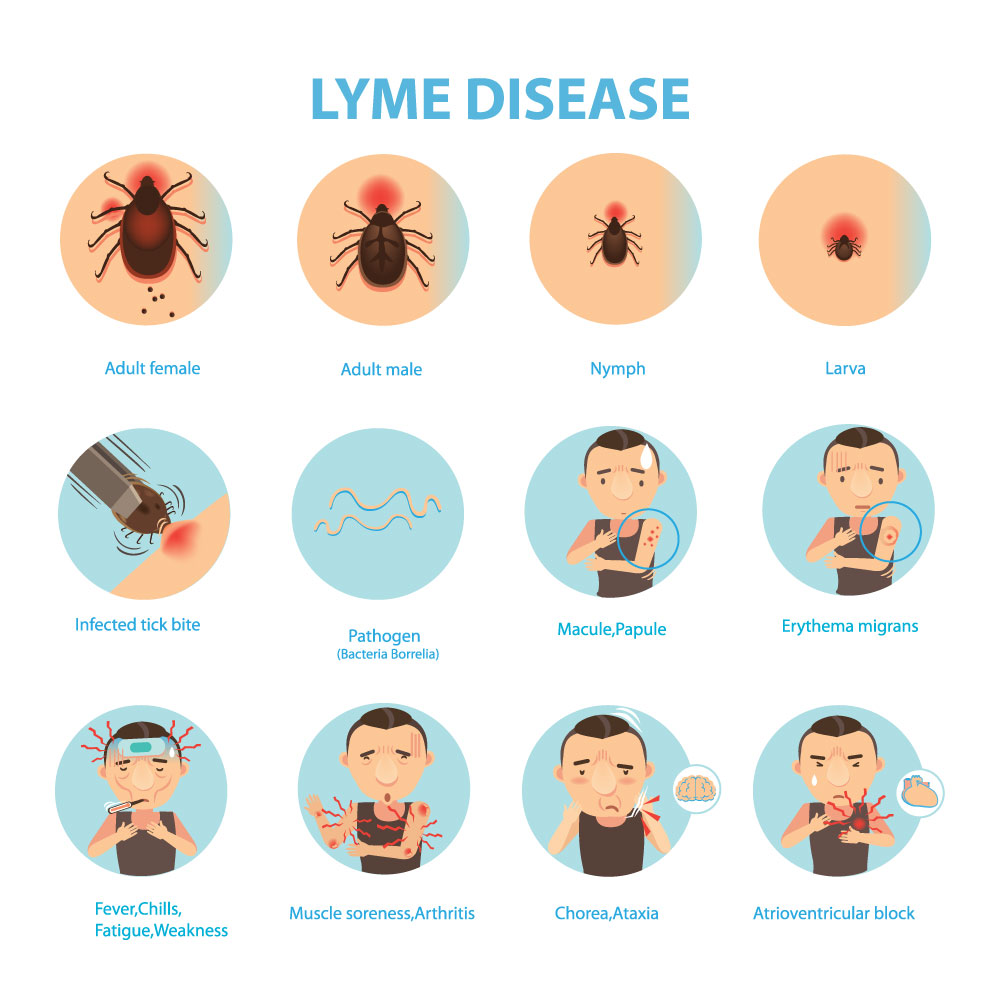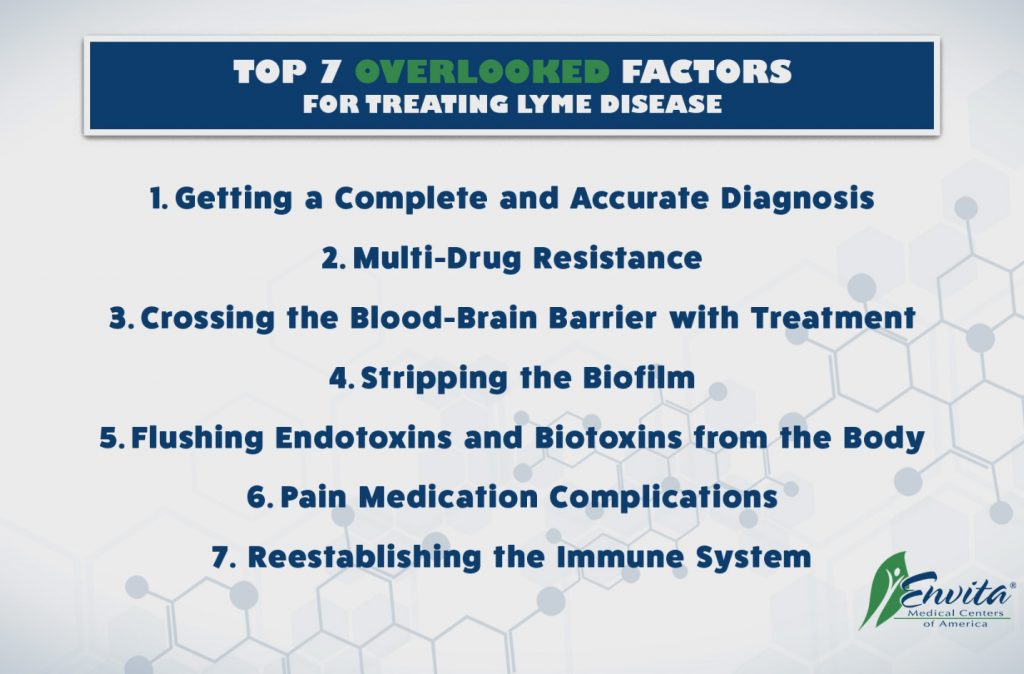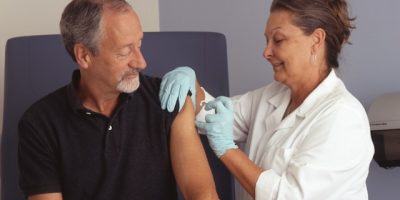What is Lyme Disease?
Ticks can be extremely infectious and their bites can lead to various life threatening diseases. Lyme disease is one such bacterial infection caused by the bite of infected black legged ticks, commonly known as deer ticks. The bacteria, Borrelia burgdorferi, is transmitted to a human’s body when these ticks attach themselves or bite on a human skin. In this article let us take a dig at various unknown facts about Lyme disease, its symptoms, treatments, and everything you need to know to prevent the disease:
Deer Ticks and Their Infectious Nature:
Deer ticks were first discovered in 1975, in the town of Lyme in Connecticut (hence, the name) where numerous children were found to suffer from juvenile rheumatoid arthritis. Scientists investigated and found that the infected tick bites were the cause of the sickness. Though deer ticks are found in some major parts of the world like the Northeast Virginia to Maine, Wisconsin, Minnesota and parts of Northern California, the disease is quite dangerous and lead to serious health issues if not diagnosed and treated in time.

Ticks have a normal instinct to brush or crawl against animal or human body through skin or clothes and remain attached to the skin for several hours. Ticks can attach themselves in any part of the human body but are mostly found in out-of-view places like the armpits, groin, back of the knee or scalp. An infected tick needs to sit on your skin for more than 36 or 48 hours before it could transmit the bacteria inside you.
Early Symptoms of Lyme Disease:
Early stage refers to 3 to 30 days after a deer tick bite on your skin. But the most tricky part is that a tick bite is difficult to detect and in most of the cases, the person doesn’t even know the presence of a tick on their body. Moreover, the early symptoms are pretty normal and could be confused with symptoms of other illnesses. Some of the common symptoms include:
- Fever
- Rash
- Headache
- Fatigue
- Joint Pains
- Muscle pains and Cramps
Developing a bull’s-eye shaped rash on the part of the tick bite is the most rigid sign of Lyme disease. But again some people might not get a bull’s eye shaped rash or any rash at all. So, it might take time to diagnose the disease.
Later Stages Of Lyme Disease:
If a fever continues for more than four weeks with increasing development of more rashes on the body then you should immediately check with your family doctor and get tested for Lyme disease. Tick infection spreads rapidly and cover other parts of the body within a few months. So, the symptoms in the later stages gets more crucial if not detected and treated at the right time. Some of the primary symptoms include:

- Severe Headache
- Neck Stiffness
- More and Deeper colored rashes
- Painful and Swollen Joints
- Changes in mood and Sleep Habits
- Numbness of arms and legs
- Short Term Memory Loss
- Drooping facial muscles
- Irregular or Slow Heartbeat
- Inflammation in the Spinal Cord
Lyme Disease Diagnosis:
The signs and symptoms of Lyme Disease are so common that it is really difficult to diagnose the disease through mere observation. Special blood tests can reveal the disease, though the results might be misleading as the signs are similar to other illnesses.

If your sickness is persisting even after several weeks after a tick’s bite, it is always advisable to consult your family physician, who might check your rashes and conduct some blood tests to ensure and treat the disease at the right time. If you are suffering from arthritis, joint swelling or any nervous system disorder, you might have to undergo some special tests with samples taken from the swollen joint or spine.
The diagnosis of Lyme disease is quite tricky and results might just lead to more confusion. So, it is always better to be extra careful and take proper precautions when visiting such places where there are threats of such deer ticks. Let us check out some quick preventive measures that would help you keep ticks and Lyme disease far away from you.
Lyme Disease Preventive Measures:
The best prevention of Lyme disease is to be carefully avoid ticks from biting you. If you are a person who loves to spend time outdoors, here are a few preventive measures that you could take to keep those ticks away from you:
- Use an Insect Repellent with 20% DEET or more. Use the rubbing formula that could be used on clothes and sparingly on the skin. But don’t use it on your face or hands.
- Walk through the centre of the trails and avoid bushy corners, tall grasses and trees.
- Wear light coloured long-sleeved shirts and pants. It is always better to tuck your pants beneath your socks for extra protection from ticks crawling through your pants. The lighter the color the better is the chance of identifying and removing a tick.
- Once back home, instantly take a shower and wash off any ticks that might have attached to you.
- Check your bodies for ticks, especially in places like your armpits, groin, back of your knee etc. Use a mirror to aid and locate the places you cannot see properly. If you find a tick attached to your skin, use fine-tipped tweezers to remove it immediately but do it slowly without hurting yourself.
- Check your children, pets, any extra clothes, tents, backpacks, overcoats, and everything else you had carried and remove ticks from them as soon as possible.
- Wash dirty clothes in warm water. The heat would kill any ticks that might have crawled on the clothes.
Lyme Disease Treatment:
Lyme disease does have a permanent cure. In most cases, people bitten by a deer tick and suffering from fever or rash are treated by antibiotics.
During the early stages of Lyme disease, antibiotics are given for 2 to 4 weeks which kills the bacteria and helps the wound to heal without spreading to the joints, nervous system and heart. The medicines usually respond well during the early stages and you will notice the rash clearing really fast.
For people suffering in the later stages of Lyme disease, antibiotics are given intravenously. The antibiotics reduce joint swelling and pain and also cures the infected wound. Incase of fluid retention in the joint areas, the doctor would drain the excess fluid through surgical measures.
Protection From Lyme Disease:
Lyme disease can happen to anyone. Especially if you are an adventurous person and love to explore new places – walking or strolling down the green aisles must be common for you. Though antibiotics and medical help is readily available for every Lyme patient, it is always better to get medical help in the early stages and protect your body from getting into any crucial state. Here are a few expert tips:
- Ask your doctor about Lyme disease and its various signs, symptoms, treatments and prevention. Not all tick bites lead to Lyme disease, so getting the right information is important.
- Track the symptoms. It is always best to treat your diseases on an early stage.
- Take care of yourself. Eat a healthy diet and sleep well. It will build a strong immune system in your body which will help to heal such infections better and faster.
Deer Ticks are tiny but can be extremely dangerous at times. So, it is always better to practice conscious prevention and protect your body from Lyme disease.
Read More:













Comments